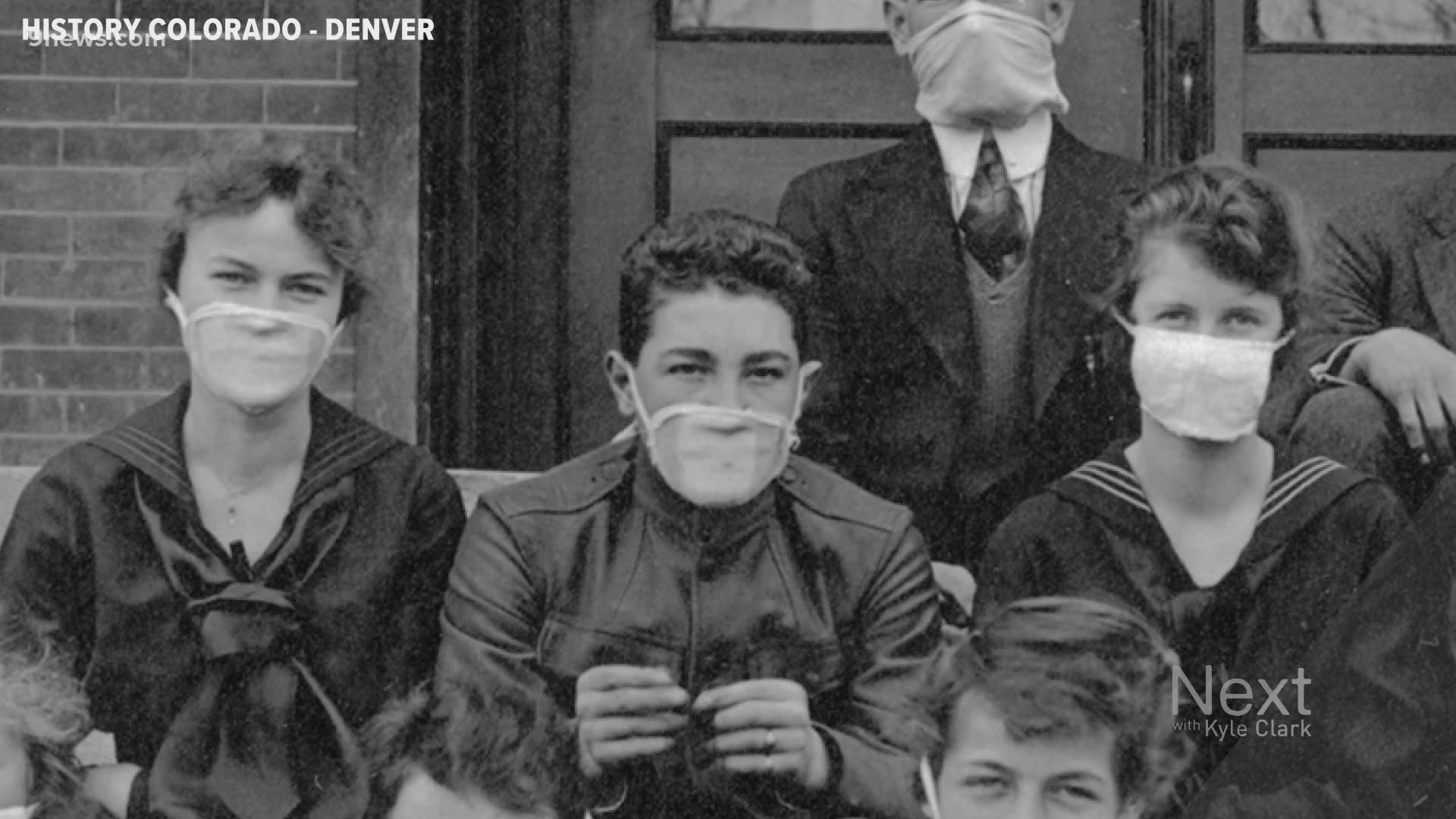DENVER —
It’s estimated about 1,500 people died in Denver and 8,000 across the state when the 1918 Spanish Flu pandemic swept through Colorado.
Next with Kyle Clark asked two local historians what we learned from back then and how we can apply these lessons to today as the novel coronavirus spreads through Colorado in 2020.
Dr. Stephen Leonard, a long time professor of history at Metro State University, said at first, Denver public officials dismissed the seriousness of the flu.
“We had a few weeks notice that it was on its way, or likely on its way. But what we did, at least initially, was pretty much head-in-the sand,” Leonard said. “We didn’t want to admit it was here at first.”
Local public health officials denied the death of a woman named Blanche Kennedy, a University of Denver student, was flu-related, according to news reports. Her death eventually was marked as the first official flu-related death in Denver.
At the time, people also couldn't make masks fast enough, Leonard said, as hospitals became overwhelmed with ill patients.
And while elected officials shut down some businesses, outdoor gatherings were allowed to continue.
Sam Bock, a public historian with History Colorado, said allowing large crowds to gather in Denver was a huge mistake.
“What they didn’t understand was these outdoor gatherings were great places to spread the virus,” Bock said.
And like today, elected officials felt tremendous economic pressure to reopen businesses, especially from the owners of local theaters.
“I think the mistakes that public officials made really were in lifting gathering restrictions too early,” Bock said. “....and so in easing on restrictions, they really created a second bump, a second spike in cases of the flu that killed many more people.”
"There is not an excuse for us," Leonard said of today's society. "We've known a lot about the 1918 flu for a long time. We are the victims of our amnesia.”
Watch Jeremy's report in the video above.
RELATED: The 1918 Spanish flu killed 8,000 people in Colorado, but Gunnison only had 2 cases. Here’s why
SUGGESTED VIDEOS | Full Episodes of Next with Kyle Clark

